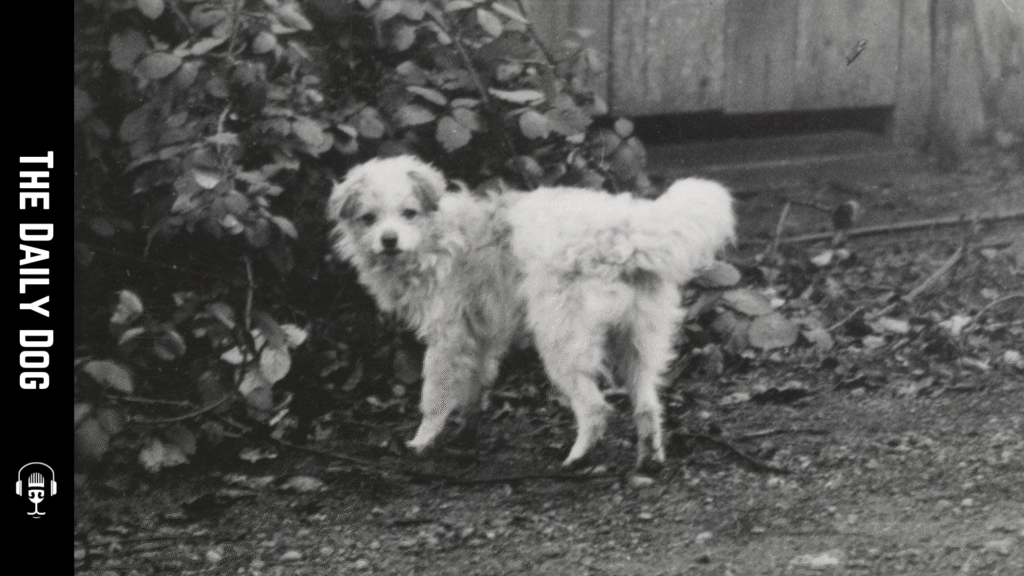The Salish Wool Dog is more than a canine companion; it is a living thread of Pacific Northwest culture, history, and resilience. Rooted in the venerable traditions of Indigenous communities along the Salish Sea, this ancient breed has endured through centuries by embodying a unique blend of utility, temperament, and striking appearance. Today, as dog lovers seek companionship with breeds that carry story and soul, the Salish Wool Dog stands out for its distinctive woolly coat, quiet dignity, and steadfast loyalty. This post explores the breed’s origins, characteristics, care considerations, and the meaningful role it can play in modern homes, while highlighting the cultural significance that continues to inspire responsible ownership and preservation efforts.
Origins and cultural significance
The Salish Wool Dog traces its lineage to the Indigenous peoples of the Pacific Northwest, where coastal environments demanded resourcefulness and close cooperation with the land. Traditionally, these dogs were valued for their wool-like double coat, which provided insulation against damp, cool climates, and for their companionship, alertness, and ability to assist with transportation, hunting, and guarding. The breed’s name reflects its distinctive fleece-like fur, which contrasts with the short, hard-coated dogs often seen in other regions.
Historically, Salish Wool Dogs played a practical role in daily life, carrying small loads, guarding families, and helping to manage camp routines. Their temperament, courteous, intelligent, and attuned to human presence, made them reliable partners in both domestic and outdoor settings. The modern Salish Wool Dog carries forward this heritage by honoring the breed’s trademark coat and its understated, steadfast personality. In many communities, maintaining and promoting the breed is a reaffirmation of cultural identity, with breeders, preservation groups, and enthusiasts collaborating to safeguard genetic diversity and accurate breed characteristics.
Physical characteristics and temperament
One of the most striking features of the Salish Wool Dog is its woolly coat. The fibers tend to be dense and plush, offering warmth and a soft touch while requiring regular grooming to prevent matting. The coat color can vary but often presents in earthy tones that blend with wooded and coastal environments. The body is sturdy yet agile, reflecting the breed’s heritage as a working dog; dogs typically have a balanced proportion of muscular frame and graceful lines. The head is expressive, with alert eyes that convey intelligence and empathy.
In terms of temperament, the Salish Wool Dog is naturally affectionate and people-oriented. They tend to form a strong bond with their family and show a calm, patient demeanor that makes them well-suited for households with children and other pets when properly socialized. While they are reserved with strangers by nature, they are not aggressive; instead, they prefer to observe and respond with measured curiosity. This blend of gentleness and vigilance makes the breed a reliable watchdog without being overbearing. They are generally moderate in energy: active enough to enjoy outdoor adventures and daily exercise, yet content to relax indoors after a fulfilling day.
Grooming and care needs
Caring for a Salish Wool Dog centers on maintaining the integrity and comfort of its distinctive coat. Regular brushing, several times a week, and daily during seasonal coat changes, is essential to prevent tangles and reduce shedding. The coat’s woolly texture can trap moisture and debris, so routine baths with a mild, dog-safe shampoo are advisable, followed by thorough drying to prevent skin issues. Owners should inspect the coat for mats in areas prone to friction, such as behind the ears, under the neck, and around the chest.
Coat maintenance is not only about aesthetics; it contributes to the dog’s overall comfort and health. A well-groomed coat helps regulate body temperature and skin condition. In addition to coat care, a Salish Wool Dog requires standard canine care: dental hygiene, nail trimming, ear cleaning, and regular veterinary checkups. Because the breed has a robust yet medium-sized frame, daily exercise is important, including walks, play sessions, and mental stimulation through training activities. Consistent routines support a balanced temperament and prevent boredom-related behaviors.
Training and socialization
Training a Salish Wool Dog benefits from a patient, positive-reinforcement approach. The breed’s intelligence and willingness to please make them quick learners, but their independence means they respond best to gentle guidance rather than harsh discipline. Early socialization is crucial: exposing the dog to different people, animals, environments, and sounds helps prevent shyness or overprotectiveness. Positive reinforcement techniques—praise, treats, and fun training sessions, build trust and reinforce desirable behaviors.
Because of their heritage as alert, loyal companions, Salish Wool Dogs often excel in obedience, scent work, and agility, provided training remains engaging and reward-based. Consistency, clear boundaries, and a predictable routine help reduce anxiety and support confident behavior. For families with children, teaching children how to interact calmly and respectfully with the dog strengthens the bond and minimizes accidental rough handling.
Health considerations and life expectancy
Like many ancient breeds, the Salish Wool Dog benefits from responsible breeding practices that emphasize health, temperament, and genetic diversity. While no breed is free from potential concerns, informed owners should look for breeders who perform standard health screenings and provide transparency about lineage. Potential health considerations may include joint health, dental care, and coat-related skin conditions, all of which can be mitigated through regular veterinary care, a balanced diet, and proper grooming.
The life expectancy of Salish Wool Dogs commonly falls in the range of 12 to 15 years, with variations based on genetics, care, and environment. Ensuring routine veterinary visits, staying up to date with vaccinations, parasite control, and preventative care contributes to a longer, healthier life. Prospective owners should be prepared for ongoing grooming needs and a commitment to enrichment activities that keep the dog mentally engaged and physically fit.
Choosing the right companion
Selecting a Salish Wool Dog as a family member involves considering lifestyle, environment, and the ability to meet the breed’s care requirements. Prospective owners should assess their daily schedule, local climate, and access to spaces for exercise and grooming. The breed’s coat benefits from regular brushing and occasional professional grooming sessions, so households with time to dedicate to coat maintenance are ideal. Those who appreciate a loyal, observant companion who remains quietly confident in various settings tend to form deep, lasting connections with this breed.
Culturally mindful ownership is also a key aspect of responsible stewardship. Supporting breeders or rescue organizations that respect the breed’s history and prioritize ethical practices helps ensure the preservation of the Salish Wool Dog’s unique traits. Engaging with local clubs or breed-specific associations can provide guidance on care standards, training resources, and opportunities to connect with other enthusiasts who share a commitment to the breed’s well-being.
The breed in modern life
In today’s world, the Salish Wool Dog resonates with families seeking a dog that offers warmth, loyalty, and a strong sense of presence without overwhelming energy. Their quiet strength makes them suitable for urban settings with regular outdoor activities, as well as rural homes where daily exercise can be woven into a busy schedule. The dog’s natural watchfulness can provide a comforting sense of security, while their affectionate nature fosters close connections with family members.
Beyond the personal bond, the Salish Wool Dog serves as a living link to Indigenous history and craftsmanship. By embracing responsible ownership, individuals contribute to a broader cultural narrative that honors traditions, supports small-scale breeders who maintain genetic integrity, and promotes awareness of the breed’s origins. This awareness helps ensure that future generations can appreciate not only the dog’s beauty and functionality but also the cultural stories woven into its very fur.
Practical tips for potential owners
- Establish a grooming routine early: start brushing and coat inspection soon after bringing a Salish Wool Dog home. This sets expectations and reduces stress during future grooming sessions.
- Prioritize socialization: expose the dog to a variety of environments, people, and pets to cultivate confidence and good manners.
- Maintain a balanced schedule: combine physical exercise with mental challenges to prevent boredom and promote a well-rounded temperament.
- Invest in quality nutrition: a diet tailored to age, activity level, and coat health supports vitality and coat quality.
- Seek reputable guidance: work with veterinarians, certified trainers, and breed clubs to ensure accurate care information and ongoing support.
Conclusion
The Salish Wool Dog stands as a testament to endurance, culture, and the enduring bond between humans and animals. With a coat that evokes the textures of the natural world and a temperament that blends affection with quiet vigilance, this breed offers a compelling choice for families and individuals who value heritage, loyalty, and thoughtful companionship. By approaching ownership with care, respect for history, and a commitment to responsible breeding and care, enthusiasts can ensure that the Salish Wool Dog continues to weave its legacy into the fabric of modern life. If you’re drawn to a canine that embodies both practical charm and cultural resonance, the Salish Wool Dog may well be the partner you’ve been seeking.
We offer a FREE Strategy Call.
Click on the graphic to learn more
Read More


Setting a Schedule and Developing a Routine for Your New Puppy








